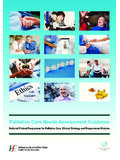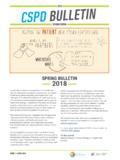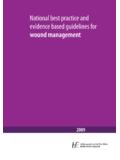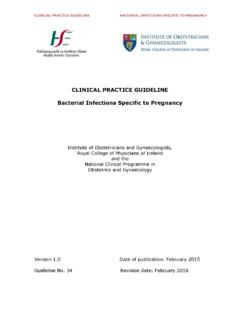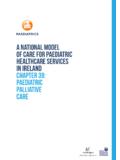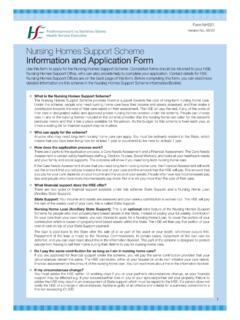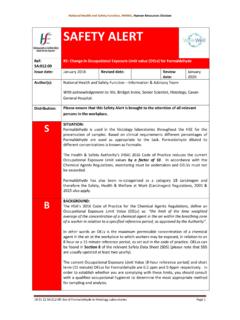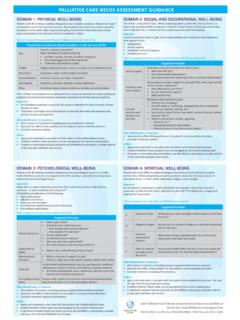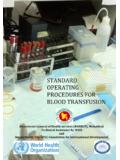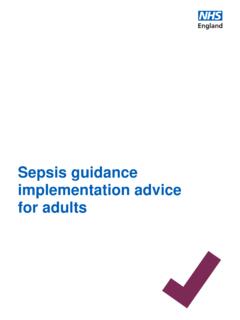Transcription of The National Emergency Medicine Programme
1 08/06/2012 12:48 Page 2. The National Emergency Medicine Programme A strategy to improve safety, quality, access and value in Emergency Medicine in Ireland The National Emergency Medicine Programme A strategy to improve safety, quality, access and value in Emergency Medicine in Ireland clinical Strategy and Programmes directorate , Health Service Executive Irish Committee for Emergency Medicine Training Irish Association for Emergency Medicine National Board for Ireland of the College of Emergency Medicine Office of the Nursing and Midwifery Services Director, Health Service Executive Quality and Patient Safety directorate , Health Service Executive Therapy Professions Committee June 2012. Overview and Key Recommendations Introduction 1. Programme Aims and Objectives 3. An Overview of the Emergency Medicine Programme 4. Executive Summary and Key Recommendations 6. Emergency Medicine Programme Report: Chapter 1: What is Emergency Medicine ?
2 30. Chapter 2: The Organisation of Emergency Care 44. Chapter 3: clinical Governance 90. Chapter 4: Patient Participation 106. Chapter 5: Paediatric Emergency Medicine 109. Chapter 6: Pre-hospital Emergency Care 129. Chapter 7: The Organisation of Trauma Care 136. Chapter 8: Inpatient Care in Emergency Medicine - clinical Decision Units 141. Chapter 9: Emergency Department Infrastructure 148. Chapter 10: Information and Communications Technology 150. Chapter 11: clinical Guidelines 160. Chapter 12: Key Specialty and Service Interfaces 165. General Practice 165. Interfaces with Unscheduled Care Specialties 170. Acute Medicine 171. Critical Care 174. Surgery 177. The Emergency Care of Older Patients 184. Psychiatry 188. Diagnostic Imaging 198. Emergency Diagnostics 203. Laboratory Medicine 203. Infection Prevention and Control 205. Chapter 13: The Emergency Team and Workforce Planning 207.
3 Chapter 14: Emergency Nursing 231. Chapter 15: The Role of the Consultant and Specialty Training 242. Chapter 16: Therapy Professions and Medical Social Work 252. Chapter 17: Academic EM, Emergency Nursing Education and Academic Activity 270. Chapter 18: A Systems Improvement Approach to Emergency Care 279. Chapter 19: The Emergency Medicine Patient Pathway 291. Chapter 20: Review Clinics 324. Chapter 21: Patients with Particular Care Needs 328. Chapter 22: Emergency Medicine Programme Measures and Value in Emergency Care 340. Chapter 23: Programme Outcomes 347. Appendices: Appendix 1: Acknowledgements 353. Appendix 2: Examples of signage for Emergency Care Network Units 361. Appendix 3: Conditions list for Local Injury Units 362. Appendix 4: Consultant in Emergency Medicine Template Job Description 365. Appendix 5: Patient-friendly Programme Summary 370. Appendix 6: Ambulance Diversion 373.
4 Appendix 7: clinical Decision Unit Length of Stay Key Performance Indicator 377. Appendix 8: ED Information Systems and Innovations in Technology 379. Appendix 9: IAEM Development of clinical Guidelines A Guide for Clinicians 384. Appendix 10: Intensive Care Unit Classification 411. Appendix 11: Diagnostic Imaging Requirements 412. Appendix 12: National EMP Staffing Survey Findings 2010 414. Appendix 13: Emergency Nursing Competency Framework 436. Appendix 14: Specific Nursing Competencies for the National Emergency Care System 449. Appendix 15: Best Practice Workshop Feedback 451. Appendix 16: Diagrams of Emergency Medicine Patient Pathways 493. Appendix 17: Cohort Definitions and Activity Measures 497. Appendix 18: Process Measure Definitions and Dataset 510. Appendix 19: Access Key Performance Indicators 523. Appendix 20: Glossary of Terms 530. Appendix 21: References and Resources 548.
5 National Emergency Medicine Programme Report Introduction The overarching aim of the Emergency Medicine Programme (EMP) is to improve the safety and quality of care and reduce waiting times for patients in Emergency Departments (EDs) throughout the country. The Programme is the most comprehensive and ambitious strategic plan for Emergency care ever undertaken in Ireland. Patients should receive the same high standard of treatment irrespective of when or where they seek Emergency care and they should not experience excessive waiting times in EDs. The safety and quality of patient care must be the primary focus of the Programme . The timeliness of care is an important component of quality and research has demonstrated that prolonged ED waits are associated with poorer outcomes for patients. Also, patient satisfaction surveys have identified prolonged waiting times as a major reason for patient dissatisfaction with ED services.
6 Many patients, their families and ED staff members have expressed concerns regarding the delays endured by patients in EDs. Most people in Ireland are familiar with the work of EDs, either through their own experience or that of a family member. We all have a vested interest in ensuring that our Emergency care system is safe, effective and efficient. The term Emergency Care (EC) includes all Emergency Medicine services, pre-hospital care, EDs and the initial stages of hospital-based management of patients who present in need of Emergency or urgent care. It also includes ED clinical Decision Units (CDUs) which are inpatient services led by Consultants in Emergency Medicine . Voluntary organisations and General Practitioners (GPs). who provide immediate care for communities are also contributors to Emergency care. Our aim must be to provide seamless high quality Emergency care through systems that are characterised by effectiveness, efficiency, accountability, sustainability, resilience and high levels of staff morale.
7 The Emergency Medicine Programme Approach The Programme is led by a multidisciplinary working group that includes Consultants in Emergency Medicine , Emergency Nurses, representatives of Pre-hospital Care and the Therapy Professions. It is supported by the Irish Committee for Emergency Medicine Training, the Irish Association for Emergency Medicine , the National Board for Ireland of the College of Emergency Medicine , the Office of the Nursing and Midwifery Services Director, the Therapies Professions Committee and Overview and Key Recommendations 1. National Emergency Medicine Programme Report the clinical Strategy and Programmes directorate (CSPD) of the Health Service Executive (HSE). The Programme working group is also supported by an advisory group drawn from the relevant training bodies and other stakeholders, a Nurse Reference Group and a Primary Care consultation group.
8 The involvement of patient advocacy group representatives is crucial to the development of the Programme 's work. The implementation of clinical Programmes across a range of specialties has opened up new channels of communication between clinical specialties, services and interest groups. The collaboration that has occurred to date, and that is planned for the future, offers an unprecedented opportunity for the development of truly integrated systems of patient care. Consultation workshops involving ED staff from all regions of the country allowed the Programme to draw upon the immense expertise and experience of care providers and ED multidisciplinary team members. ED staff have demonstrated their enthusiastic support for the service improvements envisaged by the Programme . A survey of current ED staffing, skill-mix and infrastructure was undertaken to provide a base-line for the future development of Emergency Medicine (EM) services.
9 The EMP working group wishes to thank all those who contributed to the development of the Programme , those who participated in the Programme 's Best Practice Workshops and broad range of consultation meetings and the many clinicians from outside of the working group who prepared material for the Programme report. A full list of Programme contributors is available as an appendix to this document. As ever, strong team-work was at the heart of this Emergency Medicine endeavour. The individual efforts and teamwork of Emergency care staff members, health care managers, the HSE (and future structures) and the Department of Health will determine how effectively and how quickly improvements can be achieved in the quality, safety, accessibility and cost-effectiveness of Emergency care. The EMP now looks to these groups to support and implement the Programme plan across the country.
10 We have a collective responsibility to provide our patients and our communities with high quality care. We look forward to working together to achieve this. Overview and Key Recommendations 2. National Emergency Medicine Programme Report Emergency Medicine Programme Aims and Objectives The aim of the EMP is to improve the safety and quality of care and reduce waiting times for patients in Emergency Departments (EDs) and it will achieve this through the following objectives: Develop m odels of care to im prove patient access to high quality em ergency care: Define a National Emergency Care System comprising networks of EDs fully integrated with pre-hospital and hospital-based services, ensuring a standardised approach to the delivery of high quality Emergency care;. Increase patient access to Consultant-provided care through increased Consultant numbers and expanded hours of Consultant presence in EDs.
